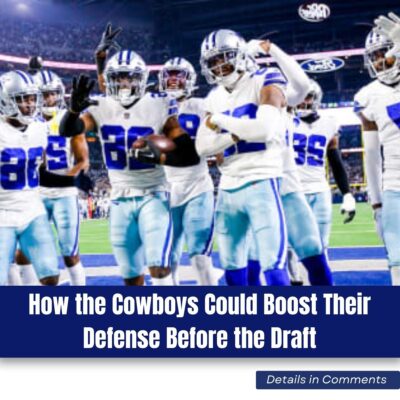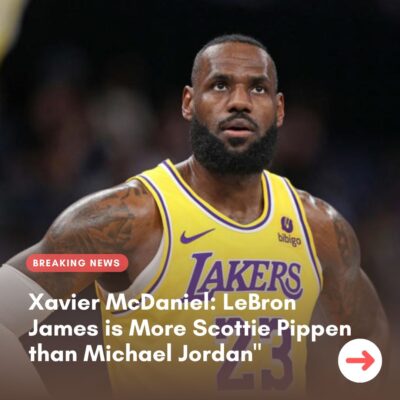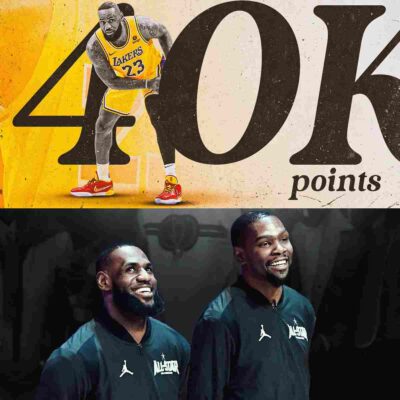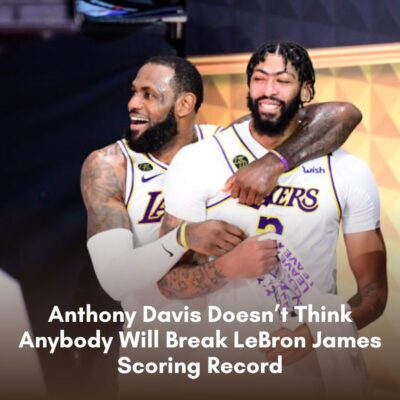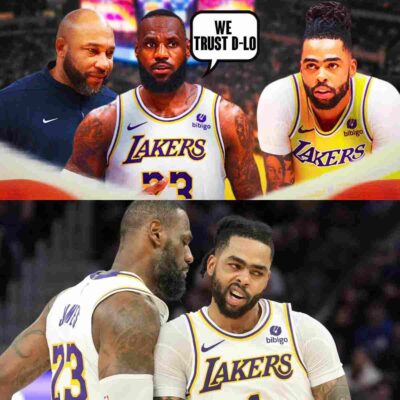We had ourselves a normal one, huh?
For all the wheeling and dealing that happened in the three days before the NBA Draft, and all the talk that lottery picks would be in play on the trade market, nobody did anything truly wild and crazy on draft night. Sure, there were one or two reaches, one big slide and the usual mystery Euro at the end of the night. But all in all, this was one of the chalkiest drafts I can remember. By and large, the vast majority of players went within a few spots of where they were projected.
That doesn’t mean the draft was uneventful, though. In particular, several things happened that will set the stage for the upcoming free-agency frenzy this weekend at 6 p.m. ET June 30, when teams can start negotiating with other teams’ free agents.
Analysis, fits for all 58 NBA Draft picks from John Hollinger and Sam Vecenie
Let’s take a look at some situations that changed and the most important developments:
Sacramento has cap room
Of all the things to fly under the radar on draft night, I think this one is the most important. The Kings jettisoned the 24th pick to Dallas in exchange for the Mavs taking on the unwanted two years and $25 million left on Richaun Holmes’ contract.
This move allows the Kings to be a major player in free agency, with an estimated $34 million in cap room if they renounce Harrison Barnes, Alex Len, Chimezie Metu, Matthews Dellavedova and Terrence Davis, decline the team option on Kessler Edwards and waive P.J. Dozier. They can generate another $2 million by renouncing Trey Lyles, but his cap hold is so low that he’s probably worth keeping on the books if possible.
This is notable, of course, because follow the dots:
The Warriors have to be sweating right now, at the very least, because there is now a highly plausible rival Green bidder on the market. Of course, that’s not the only situation in which the Kings can be a threat. The likes of Jerami Grant, Kyle Kuzma and Grant Williams could also be in play here, not to mention possible offer sheets for younger players who better fit the Kings’ timeline, such as Brooklyn’s Cam Johnson or Charlotte’s P.J. Washington. With Indiana and Houston also having major cap room and looking hard at the power forward market, this could quickly get frothy for the league’s fours.
Sacramento also could bring back Barnes and Lyles, use its $12.4 million non-taxpayer midlevel exception for another forward and enter the year armed with a $12 million trade exception for Holmes; however, with the MLE also available to teams as a trade exception under the new CBA, $12 million TPEs don’t pack the power they used to.
Portland’s post-Lillard future
Once Charlotte somewhat questionably selected Brandon Miller over Scoot Henderson with the second pick, it left the Blazers in a great position to determine their own future after several years of muddling.
Portland now has a backcourt of the future in place with Henderson and last year’s lottery pick Shaedon Sharpe, and that puts the Blazers in a very interesting position vis a vis the increasingly tiresome will-he-or-won’t-he dilemma about Damian Lillard’s future.
Simply put, Portland is set now. The Blazers need not cower in fear anymore about Lillard demanding a trade; in fact, they should be proactively considering the idea because his value will never be higher. At the very least, the Blazers should treat any threat of Lillard pushing his way out with a shrug and a yawn; their best chance for competing for anything important is in the post-Lillard era around their two teenage phenoms.
Either way, collateral damage from the Henderson pick could include Anfernee Simons and Grant. It was widely assumed the Blazers would bend over backward to overpay Grant, to keep the team competitive and keep Lillard from bailing. Now, is that really such a big priority? Portland shouldn’t fear signing Grant to a reasonable contract, but if somebody wants to overpay Grant (see Sacramento above, for instance), Portland doesn’t need to cave in a bidding war.
Simons, meanwhile, is a fourth guard making over $20 million a year. That’s untenable in almost any salary structure but especially one where Lillard is pulling $45 million a year, the Blazers don’t want to pay the tax, and the team currently employs virtually no tall people.
Trail Blazers think they made move that trumps any trade in drafting Scoot Henderson
Best night: Dallas
I would have never believed the Mavs would be able to dump Dāvis Bertāns’ contract while only moving down two spots in the draft and still walk away with the absolute perfect-fitting piece for them in Dereck Lively II. Getting a Tyson Chandler clone on a cost-controlled four-year deal to catch alley-oops and protect the rim next to Luka Dončić and possibly Kyrie Irving is the absolute best-case scenario for what could have possibly happened for Dallas. Doing it while fixing the cap sheet? Brilliant.
It speaks to the disparity in value between the two trades that Dallas dumped a bad contract to move down just two spots, from 10 to 12, and then took on a similar but smaller contract from Sacramento (Holmes) to obtain the 24th pick. That player, defensive stopper Olivier-Maxence Prosper, also is a fairly ideal fit.
With Bertāns removed, the Mavericks can now re-sign Irving at or near his max and still have the full non-taxpayer midlevel exception available to tackle their glaring lack of depth. Dallas should also have a small trade exception ($5 million) left over from the Bertāns trade. The Mavs will likely barely skirt the tax apron, but they can now pull off something that seemed extremely difficult 24 hours ago.
I hate to say it, but the final-week tank turned out to be worth it.

Dereck Lively II and Adam Silver (Wendell Cruz / USA Today)
Anatomy of a draft-day slide
The biggest story on draft night was the slide of Villanova forward Cam Whitmore, the third-rated player on my board. who ended up going 20th to the Houston Rockets. Whitmore was in play as high as the fourth pick with Houston, but in the final days before the draft, more chatter began bubbling up of a potential Whitmore slide.
Talking to sources around the league, who were granted anonymity so they could speak freely, I noticed two reasons cropping up: One, some teams red-flagged Whitmore’s medicals due to concerns about his knees. Second, his workouts and interviews left teams severely underwhelmed. “Comatose” was the description one source used.
Rockets’ first-rounders talk fit, new Houston teammates and more
The really interesting part was what happened once we got beyond the ninth pick … past the portion of teams that would have had Whitmore on their short list for evaluation in the first place and past the portion that would have been able to work him out. In particular, once the Magic passed on him a second time, at No. 11, all the teams beneath them had to start wondering: Do they know something we don’t?
That’s when the risk aversion really kicked in. There is information in a draft slide: Even if you know nothing else about a player, you know the teams who evaluated the player most closely and had the best pre-draft access ended up at, “Thanks, but no thanks.” Sometimes, this is way overblown (perhaps the player was the second choice on everyone’s board). Other times, it becomes apparent in the months and years after the fact why the slide happened.
In this case, you have to really wonder why nobody in the teens decided the risk was worth the potential reward. To use another comparison, Michael Porter Jr. had the worst medicals I have ever seen in a draft prospect and didn’t exactly blow people away in the interview portion either; he ended up going 14th and more than justified that selection as the third option on a championship team.
Whitmore fell to No. 20 even as several players with pretty limited upsides went off the board ahead of him. The stretch of picks after Utah at No. 9, including a run on one-dimensional shooting specialists with pick Nos. 11, 12 and 14, two other small guards and whatever Jalen Hood-Schifino is supposed to be.
Houston finally took the plunge, which was interesting because the Rockets had all the pre-draft intel and homework on Whitmore from considering him with the fourth pick. Some felt he was Houston’s second choice at that spot; amazingly, he was still sitting there at No. 20. Until further notice, this was the steal of the draft.
Trading down beats trading up
While multiple teams overpaid for the privilege of moving up in the draft — a move that more often than not looks questionable in hindsight, no matter how urgent it seems in the heat of the draft-day moment — Boston took the opposite track and beefed up its future pick inventory while only moving down 13 spots.
To make sense of Wizards-Warriors trade (and others), look at the contracts
On their journey down from No. 25 to No. 38, the Celtics acquired four future seconds. If reports on the picks are correct, at least two of them are very likely to be in the low 30s: a 2025 second-rounder that is the most favorable of Detroit’s, Washington’s or Golden State’s; and a 2026 second that is the most favorable of Portland’s, New Orleans’, New York’s or Minnesota’s.
The Celtics also left the draft with a 2027 second from Atlanta, a 2024 second from Dallas and, with the 38th pick, Arkansas wing Jordan Walsh. Even he fills a strategic need, as Boston can sign him for the rookie minimum to its 14th roster spot and minimize what is likely to be a larger luxury-tax bill this season. The difference between the Walsh contract and the regular veteran minimum, in fact, could end up keeping the Celtics just a whisker below the second tax apron.
As for the teams that traded up, the most interesting by far was the Thunder agreeing to take on a whopping $33 million in underperforming salary in the form of Bertāns just to move up two spots from 12th to 10th and take Cason Wallace. The trade won’t complete until July, when the Thunder’s cap room comes online, but what’s notable here is that Bertāns’ $16 million salary for 2024-25 is just small enough that Oklahoma City might still have cap room possibilities next summer. As for this summer, the Thunder have some decisions to make on a roster that is bursting at the seams, but they are assured of hitting the minimum salary floor without having to do anything too dramatic.
Otherwise, some of the value propositions on the trade-ups were pretty wild. In addition to what Oklahoma City did, Charlotte traded pick Nos. 34 and 39 just to move up to No. 31 for James Nnaji; Sacramento traded a future second to Boston just to move up four spots and take Colby Jones; and the Lakers paid a whopping $4 million to jump from No. 47 to No. 40 in a deal with Indiana. (In L.A.’s defense: It’s the Busses’ money, and Max Lewis likely wasn’t making it to pick No. 47.)
I’d add Washington to this list, where the trade-up was more weird than a jarring defeat value-wise. Trading two future seconds in 2028 to go from No. 8 to No. 7 wasn’t a terrible choice in terms of raw value, even if the player the Wizards selected (Bilal Coulibaly) had a decent chance of making it to eighth given that Indiana seemed locked on one of two power forwards at No. 7. Washington feared getting jumped by a team behind it and wanted to lock it in; one can debate how reasonable this fear was, but it wasn’t a wild overpay.
Want basketball content delivered to your inbox for free? Sign up for The Bounce.
(Photo of Draymond Green and Trey Lyles: Darren Yamashita / USA Today)


